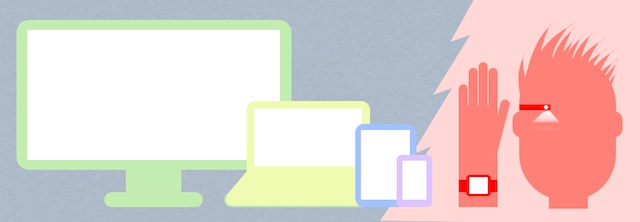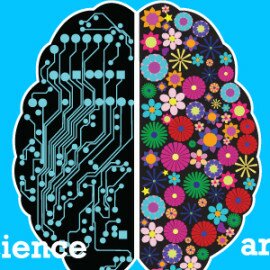Fast Company: The Fight for the Fifth Screen
Media
The article below is from Kit Eaton and lifted from Fast Company.
It’s interesting. Smartwatches, AR goggles, and more: There’s a mighty scramble afoot for your last sliver of attention. Is the the start of ad-mageddon?

Screens: can’t live without ‘em; can’t avoid ‘em. And surely where there are screens, there will be companies hocking goods. How will this change the ad game–and us?
Smartwatches are suddenly big news: Pebble, an upcoming and rather radical device from young firm Allerta, has raced past the previous project funding record on Kickstarter and looks to be already a big hit–it may even end up on 100,000 wrists before the end of this year.
Pebble’s success is one of those long-build-up/ overnight success phenomena, and while great leadership and a degree of luck played its part, maybe the critical mass of smartphones has been reached: The time might just be ripe for this smartphone companion. In fact, Sony last week launched its latest effort, designed specifically for its Android smartphones and destined to be a similar, if more expensive (and definitely iPhone-hostile) rival to Pebble.
Meanwhile, the New York Times notes that: “Wearable Computers Are The Next Big Devices, Report Says.” The conclusions from a Forrester Research report are important: Consumers are ready to experiment with wearables, particularly if they deliver value in “health and fitness, navigation, social networking and gaming.”
This comes just a short while after Google revealed its Project Glass endeavor, a fully-fledged augmented reality goggles system, ready to display Google’s location-pertinent info on your view of the world as you walk around, helping you navigate, communicate, social network and play. And…other things, more of which in a moment. Glass is a prototype for now, but Google’s Sergey Brin, who recently wore one to an event, has spoken up and said they’re definitely developing them and to give his company time to get it right.
Piqued that it may get shunted out of this limelight, Oakley–maker of stylish sunglasses that even X-Men wear, and also of the lamentable MP3 player/glasses combo “Thump”–has piped up and noted its been working on developing AR goggles since 1997. Vuzix, meanwhile, has quite definitely been selling specialist VR and AR goggles for some time. They’ve not exactly leaped into the mainstream but perhaps that’s because the tech to project the imagery into your eye was evolving too slowly and was too bulky to create a device that looked non-hackerish.
What these efforts all have in common is that they’re all trying to be the fifth digital screen in your life. We’ll discount the cinema, as that’s not an everyday thing, but the other four are your TV, your tablet PC, your smartphone and your computer. All of these deliver entertainment and information to you, let you update your social network, and even make the odd phone call or video chat.
And they can all deliver advertising. That’s the “other thing” that Google does. And that’s why there’s a scramble for the fifth screen in your life. Wearable technology is potentially with you much more of the time–your smartwatch is more on display and more accessible than your smartphone lodged in your pocket or purse, and your AR goggles may become a big part of daily life for some users. And thus advertising could become even more prevalent in our daily lives.
Tiny ads, micro ads, perhaps combined with highly-accurate targeting, based on the extra digital information–including location–that your fifth screen device reports about you to Google, to Apple, to Nielsen or whoever. As Fritz Bachen, psychologist and founder of Naked Communications, explains to Fast Company, “Repetition of messages, whether we are aware we are experiencing them or not makes brands more familiar to us, and therefore more likeable, and therefore more likely to be purchased. In that regard it’s in a brand’s interests to be in our face all the time, whether we notice it or not.”
In this way the fifth screen is basically an advertiser’s heaven. It gives advertisers the power to deliver both high-involvement ads (ones that you actively like to engage in like free numbers you call in response to ads, or viral videos that you promote to friends) and low-involvement ones like, as Bachen explains, “things you hardly notice, the billboard you drive by, the TV ad you didn’t notice.”
In an era of fifth-screen smartwatches or AR goggles this means a pop-up ad in your vision, or a buzz on your wrist, could alert you to a deal at a local Starbucks as you stroll through town, offering a $1 discount if you hand over a promo code to the barista. And it could also mean more subtle messages, ones that flit onto the fifth screen and off it in an endless array of ads that barely attract your attention. But as Bachen notes “The scary thing about a future of ubiquitous advertising is not the ‘high involvement’ stuff, as that advertising we will only opt in for if the pay-off is greater than the effort–it’s the low involvement stuff. Interesting low involvement advertising works, and works well.”
Essentially, the fifth screen represents a paradigm shift in advertising as much as it represents a change in the way we use computers on the move. It means ads everywhere, and different kinds of ads too–something TV advertisers are beginning to wake up to, now viewers usetheir iPads and phones while watching TV (music-recognizer app Shazam partnering with a U.K. TV channel for ads is a great example of this). Bachen thinks that, “Every single piece of advertising now has as its goal behavior change. Understanding how to change behavior, and what people will choose to interact with is key for advertisers. Expect to see more science, more psychologists, and more behavioral data informing advertising in the future.”
Is this a good thing? Ubiquitous advertising could spell trouble, as the satirical remake of Google’s Glass video suggests:
But brands know that if they piss consumers off, then that’s more of an incentive for them to actively engage with a rival brand. Bachen says that in the future “we’ll live in an increasingly advertising-saturated society,” which is the bad news, but the good news is that “advertising will be more useful, entertaining, charming and playful than ever or else it will get ignored.” It seems likely then, that it’ll be the fifth screen in your life that will be responsible for introducing us to this brave new, trademarked and slogan-swamped world.



